Sorry, we don't have any places yet
Explore more places related to this search:
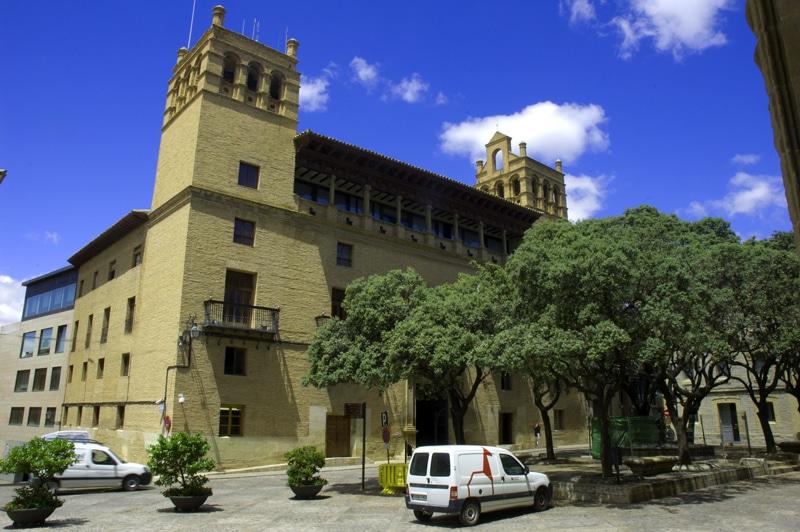
Removed from Unnamed collection
Huesca City Hall 
This splendid old Aragonese Renaissance palace with imposing towers on either side, a wooden roof and imposing staircase forming a beautiful gallery, dates back to the 16th century.
Inside the Court the old wooden roof and ceiling can be observed which continues into the old Hall of Justice housing the painting by Jose Casado del Alisal, dating back to 1880 and depicting the infamous legend of the Bell of Huesca. To the right of the City Hall is the old Imperial College Santiago, founded in 1534, which was once part of the most prestigious University of Huesca for over three hundred years. http://www.huescaturismo.com/en/monumental-detalle/10/city-hall/
Map
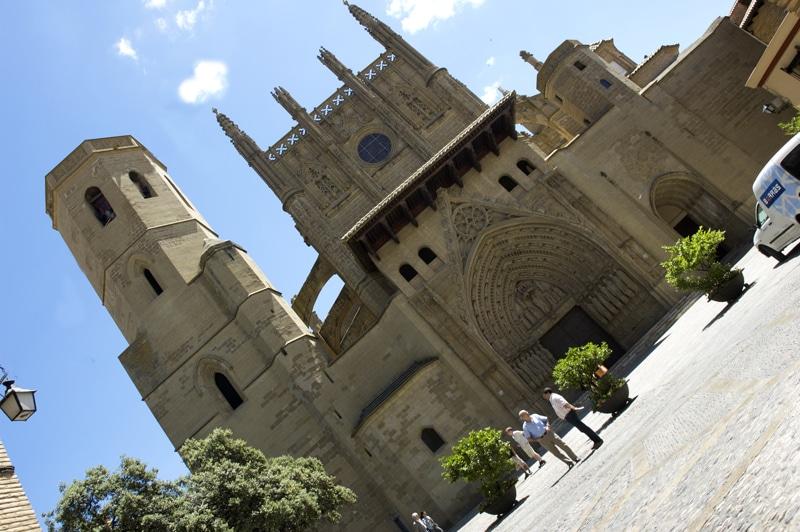
Removed from Unnamed collection
The Diocesan Cathedral Museum 
This is an old Gothic building which dates back to the 13th and 14th century. Its altarpiece is a superb example of Spanish Renaissance sculpture carved in alabaster by Damián Forment between 1520 and 1533, representing the Passion of Christ. http://www.huescaturismo.com/en/monumental-detalle/7/the-diocesan-cathedral-museum/
Map
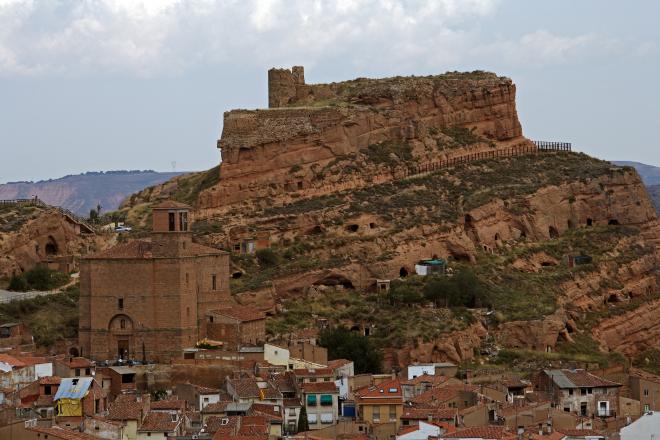
Removed from Unnamed collection
Rosette Castle Of Arnedo 
Castle with Remains of a powerful red sandstone fortress. https://lariojaturismo.com/en/community/larioja/resource/castillo-roquero-de-arnedo/d1e9dc93-c457-4998-884b-d981e47a2e8e
Map
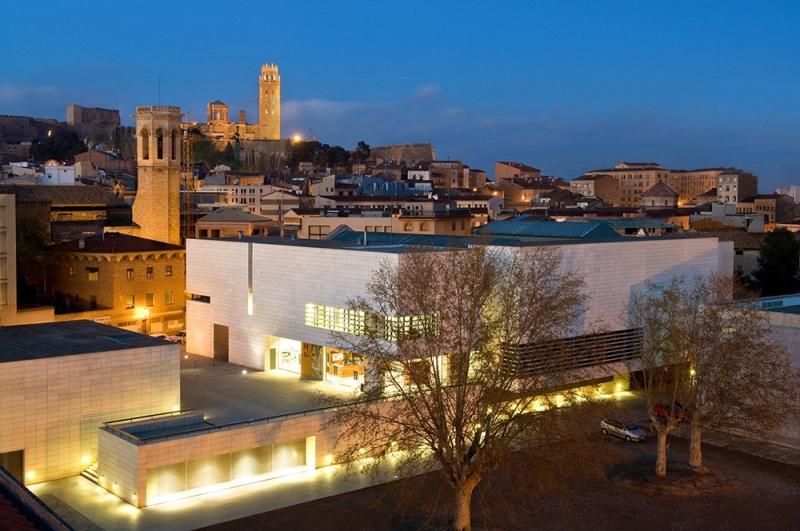
Removed from Unnamed collection
Lleida Museum 
The new home of the Lleida Diocesan and District Museum opened its doors to the public in November 2007, becoming the city's flagship museum. Visitors to its more than 7000 square metres of exhibition space are plunged into the history of Lleida. A story which begins with prehistory and continues up to the modern era. http://www.turismedelleida.cat/viure-a-lleida-en/el-museu-de-lleida
Map
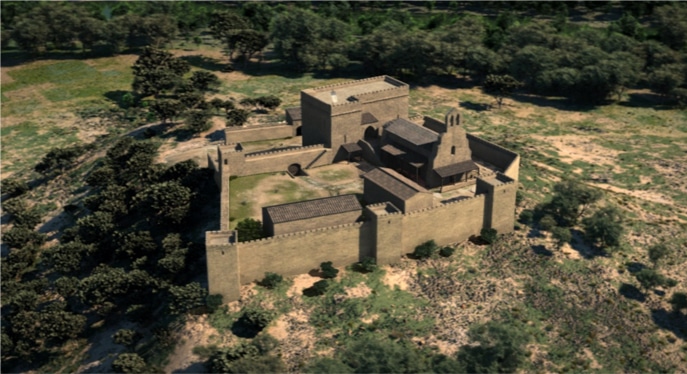
Removed from Unnamed collection
Templar Castle of Gardeny 
With the conquest of the city of Lleida in 1149, the Templars received various properties in compensation for their assistance during the siege, including Gardeny Hill. The earliest reference to the Gardeny Command dates from 1156, the first commander being listed as Brother Pere de Cartellà, a figure who had been actively involved in the city siege. http://www.turismedelleida.cat/viure-a-lleida-en/el-castell-de-gardeny
Map

Removed from Unnamed collection
La Llotja de Lleida 
La Llotja is a monolithic construction, subdivided into three functional levels allowing it to serve different purposes.
The central level is the interconnecting core, linking up the various programmes by means of the central stairway/ramp, which also provides illumination. http://www.turismedelleida.cat/viure-a-lleida-en/la-llotja-de-lleida
Map
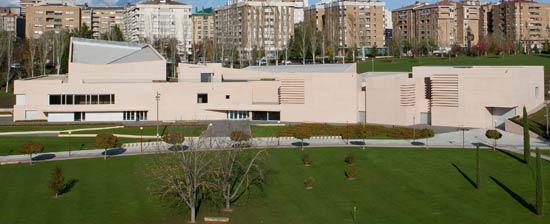
Removed from Unnamed collection
The University of Navarre Museum 
A building designed by Rafael Moneo, which holds a contemporary art collection that includes artists such as Tàpies, Picasso, Kandinsky and Chillida. It is also home to a major photo collection. http://www.spain.info/en_IN/que-quieres/arte/museos/navarra/museo-universidad-navarra.html
Map
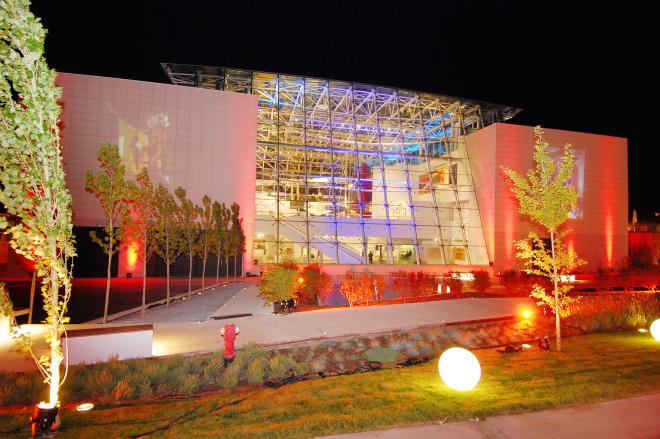
Removed from Unnamed collection
Museo Wuerth La Rioja 
The Würth Museum has been designed as a 20th-21st avant-garde international contemporary arts scenario. Here the works belonging to the Würth España collection will be exhibited, as well as those of the Würth Collection from Germany, considered one of the main ones in Europe and collected thanks to the initiative of Professor Dr. h.c. Reinhold Würth since the 1960s. https://lariojaturismo.com/en/community/larioja/resource/museo-wurth-la-rioja/12971336-6c8b-4b3e-a394-af8e4f8a80f4
Map
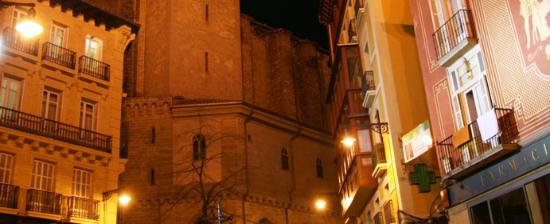
Removed from Unnamed collection
Church of San Saturnino 
The outline of this Gothic church with its two high towers is one of the most emblematic silhouettes in the city. The southern or clock tower is crowned with a weathervane in the shape of a cockerel. http://www.spain.info/en_IN/que-quieres/arte/monumentos/navarra/iglesia_de_san_saturnino.html
Map
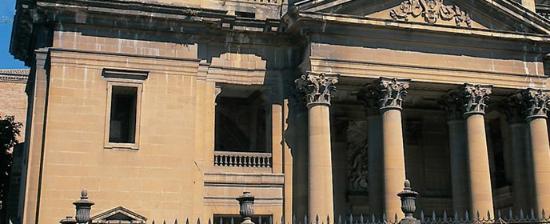
Removed from Unnamed collection
Pamplona Cathedral 
Construction was begun by Charles the Noble in 1397 on a 12th-century Romanesque building, and was completed in 1501. The high altar is crowned by a figure of the Virgin of Santa María la Real, in front of whom the kings of Navarre used to swear their oaths. http://www.spain.info/en_IN/que-quieres/arte/monumentos/navarra/catedral_de_pamplona.html
Map

Removed from Unnamed collection
Colegiata de San Miguel 
In Plaza España, at the top of a series of uninterrupted steps in the shape of a shell, rises the brick façade, a late 17th century Aragon Baroque masterpiece. It is flanked by two 50 m towers. Between the two, a central section. The lower part is divided by two large pillars. https://lariojaturismo.com/en/community/larioja/resource/colegiata-de-san-miguel/cd2f373e-d17c-495a-a4c7-8bcef157eb6d
Map
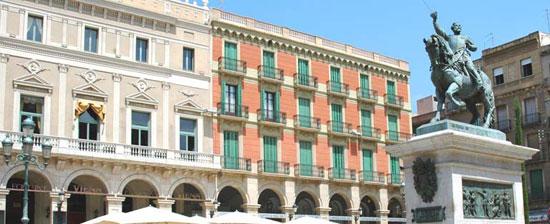
Removed from Unnamed collection
The Plaza de Prim square 
The Plaza de Prim square, the site of the lovely Fortuny theatre, before going on down Calle de Monterols to the Plaza del Mercadal square. This is the site of the Casa Navàs building, a Modernist jewel designed by Doménech i Montaner which still contains period furniture, coffering and lamps. http://www.spain.info/en_IN/que-quieres/ciudades-pueblos/otros-destinos/reus.html
Map
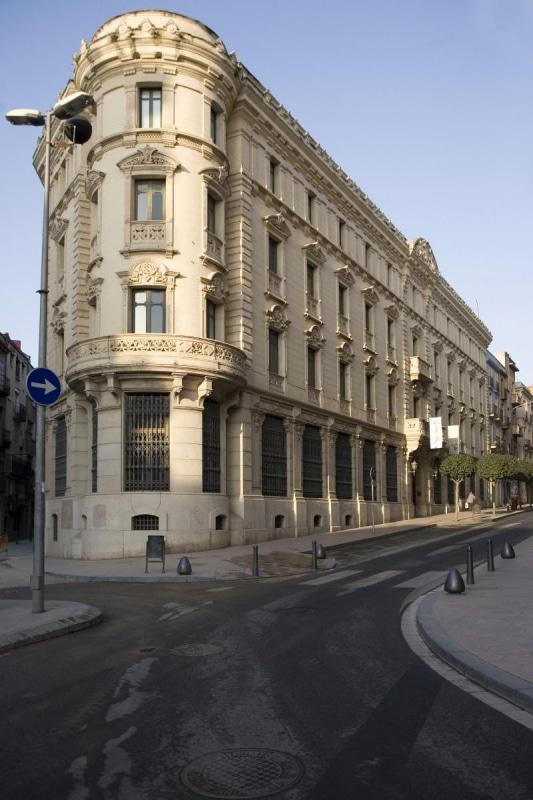
Removed from Unnamed collection
Museu de Reus Salvador Vilaseca 
The museum presents exhibits dating from prehistoric times through to the modern age. http://www.reus.cat/museu-de-reus-salvador-vilaseca
Map

Removed from Unnamed collection
Delta del Ebro 
24 February 2024
Delta del Ebro is situated in Catalonia, northeastern Spain, where the Ebro River flows into the Mediterranean Sea. It spans across the provinces of Tarragona and Terres de l'Ebre, forming a vast natural park and wetland area known for its biodiversity and stunning landscapes. It's a birdwatcher's paradise, with an incredible array of species to spot. We spent hours in awe, observing flamingos, herons, and countless other birds in their natural habitat. It was an absolutely breathtaking experience, a reminder of the beauty and diversity of our planet.
Map
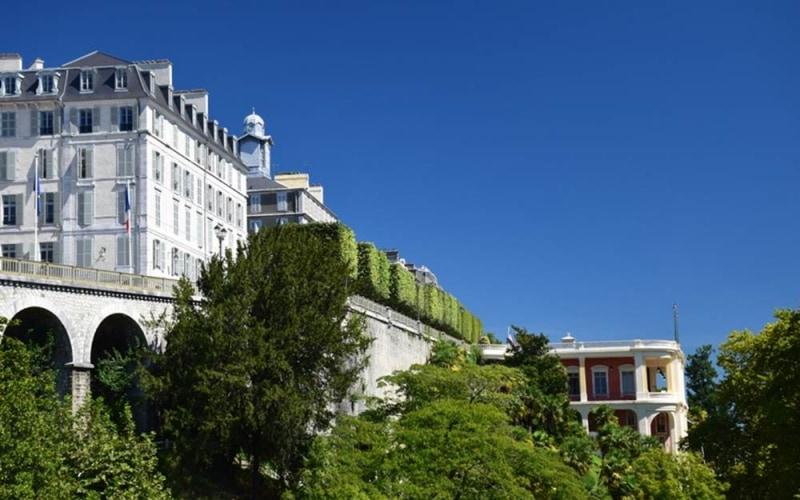
Removed from Unnamed collection
The Joantho Gardens, 
Facing the station, the Joantho Gardens, named after the Municipal Councilor, who proposed the plan to Henri Faisans, mayor of Pau from 1888 to 1908. The look is up: the magnificent perspective that is on the arches of the Boulevard des Pyrenees. http://www.pau-pyrenees.com/pau/les-jardins-joantho/tabid/315/offreid/b9920c97-06b6-4279-a8cd-fc18a5bf8f95
Map
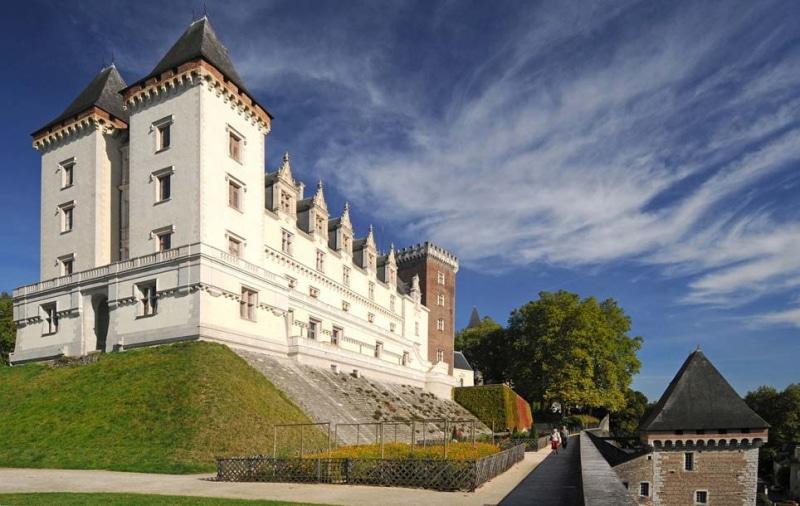
Removed from Unnamed collection
National Museum of the Chateau de Pau 
Restored in the 19th century and classified National Museum, it presents 1000 years of history and offers visitors a rich decorative ensemble, as well as an impressive collection of Gobelins tapestries from the 16th to the 19th century. http://www.pau-pyrenees.com/home/notre-patrimoine/une-touche-de-culture/musee-national-du-chateau-de-pau
Map
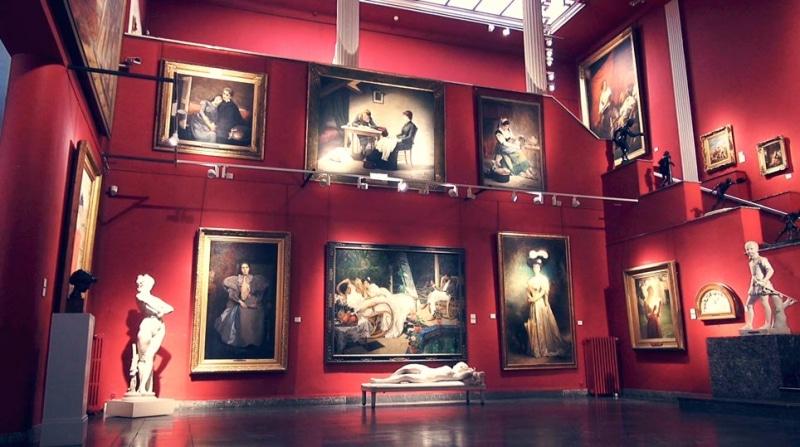
Removed from Unnamed collection
Fine Arts Museum 
In addition to Degas's masterpiece " The Cotton Office in New Orleans" , the museum presents a very fine collection of paintings from Flemish, Dutch, Italian, Spanish and French schools from the 15th to the 20th century. It is the second museum of Aquitaine by the richness of its collections. http://www.pau-pyrenees.com/home/notre-patrimoine/une-touche-de-culture/musee-des-beaux-arts
Map
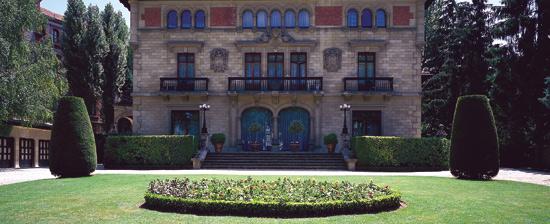
Removed from Unnamed collection
Ajuria-Enea Palace 
The Palace of Ajuria-Enea is known, above all for being the headquarters of the Basque Government. Apart from its administrative function, it contains monuments, history, and art of great value. http://www.spain.info/en_IN/que-quieres/arte/monumentos/alava/palacio_de_ajuria-enea.html
Map
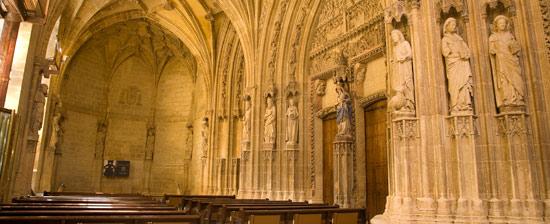
Removed from Unnamed collection
Cathedral of Santa Maria 
It is built on a previous construction dating from the 13th century, and has a doorway with interesting sculptures. The Cathedral of Santa María originated as a church-fortress in the early 13th century. Construction was subsequently completed in the Gothic style in several stages throughout the 14th and 15th centuries. http://www.spain.info/en_IN/que-quieres/arte/monumentos/alava/catedral_de_santa_maria.html
Map

Removed from Unnamed collection
Vitoria-Gasteiz Town Hall 
Is a Neoclassic-converted building in the town centre. Built in 1731 and restored in 1982. The building blends into the portico space of the Plaza de España. Designed by the architect Justo A. de Olaguibel. http://www.spain.info/en_IN/que-quieres/arte/monumentos/alava/casa_consistorial_de_vitoria-gasteiz.html
Map
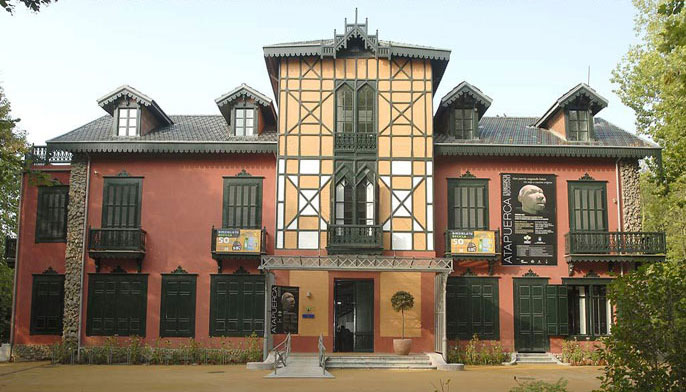
Removed from Unnamed collection
Palace of the Duke of Mandas 
Standing in the Cristina Enea Park, the building is presently occupied by the Fundación Cristina Enea, created to raise awareness on environmental issues and sustainability.
The present distribution of the mansion, which dates from 1890, is the work of Jose de Osinalde. Today is ground floor is occupied by the Fundacion Cristina Enea. Entering through the front door, you will come to the reception and the large wooden stairway. The second floor houses the office ones used by the Duke of Mandas and two exhibition spaces. Lastly, the building has a gallery for traveling exhibitions that connect the main building to an educational room in the former chapel. There is also a rest area for visitors. https://www.sansebastianturismo.com/en/to-do/culture-art-architecture/mansions-and-castles
Map
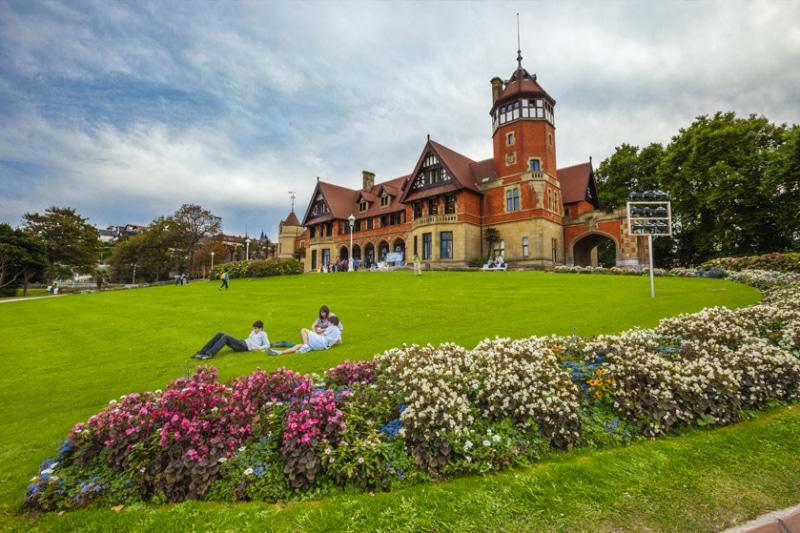
Removed from Unnamed collection
Miramar Palace 
Miramar Palace was built in 1893 on the order of Queen María Cristina of Austria, who used to spend her summers in Donostia/San Sebastián. After considering other places such as Monte Urgull and Aiete, the queen settled on this location, where there had previously been a hermitage which had to be moved to another spot. Nowadays, if you visit the Antiguo neighbourhood you will find the palace among its streets.
In first impressions, the palace is reminiscent of English noble country houses. Designed by the English architect Selden Womun and built by the master craftsman José Goikoa, for years it remained in the hands of the Spanish Royal Family, serving as their summer residence and as the college of Juan Carlos de Borbón. https://www.sansebastianturismoa.eus/en/to-do/culture-art-architecture/mansions-and-castles/miramar-palace
Map
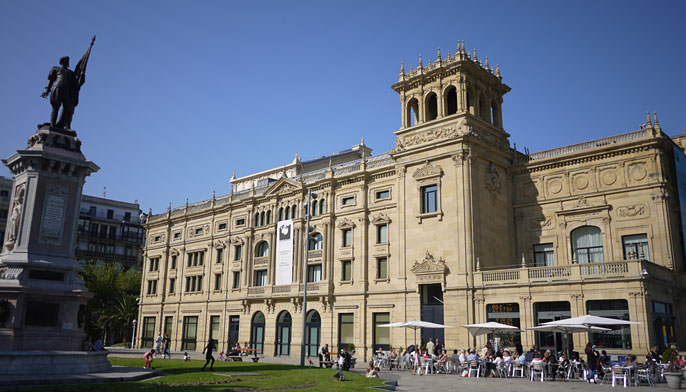
Removed from Unnamed collection
Victoria Eugenia Theater 
Belle Epoque in design yet highly modern in spirit. That’s how we could describe the Victoria Eugenia Theatre, a building that celebrated its 100th anniversary in 2012. Located in the city centre, in full view of the Kursaal and on the banks of the River Urumea, the Victoria Eugenia Theatre proposes a varied and continually changing programme.
This sandstone building sporting plateresque motifs with Spanish Renaissance forms was created by the architect Francisco de Urcola in 1912. Particularly interesting on the facade are, over the Doric columns, four groups of sculptures representing the opera, tragedy, comedy and drama.
For decades the Victoria Eugenia Theatre has been the principal hub of the International Film Festival; since its renovation in 2007, the building now offers new cutting edge spaces and audiovisual technologies. https://www.sansebastianturismo.com/en/to-do/culture-art-architecture/belle-epoque#ayuntamiento
Map
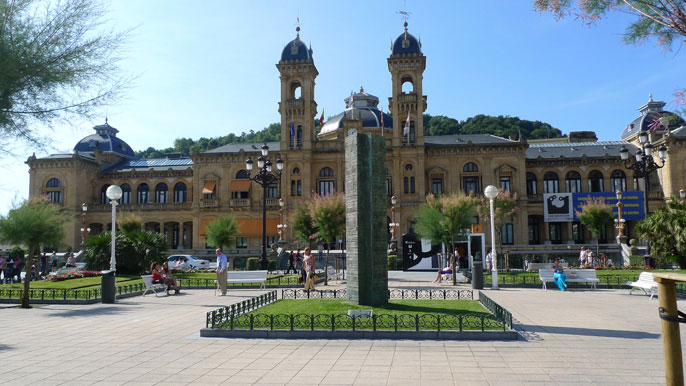
Removed from Unnamed collection
San Sebastian's City Hall 
What is today San Sebastián's City Hall was home to the city’s Gran Casino from the time it was opened on 1st July 1897 until it was closed in 1924 with the prohibition of gambling. Its roulette tables and Dance Hall, currently the Plenary Hall, provided entertainment for politicians, writers and artists in the Belle Epoque period. https://www.sansebastianturismo.com/en/to-do/culture-art-architecture/belle-epoque#ayuntamiento
Map

Removed from Unnamed collection
San Sebastian Old Town 
Tradition and modernity are brought together in one of the most special areas of the city. Stroll through the fishing port and lose yourself in the streets of the Historical Quarter where the smell of pintxos emanates from every corner. Cross the Boulevard and leap through time to land in the centre of Donostia, and visit its pedestrian streets and spend a few hours shopping in its lovely shops and boutiques. https://www.sansebastianturismo.com/en/to-do/district-by-district/centre-old-town
Map
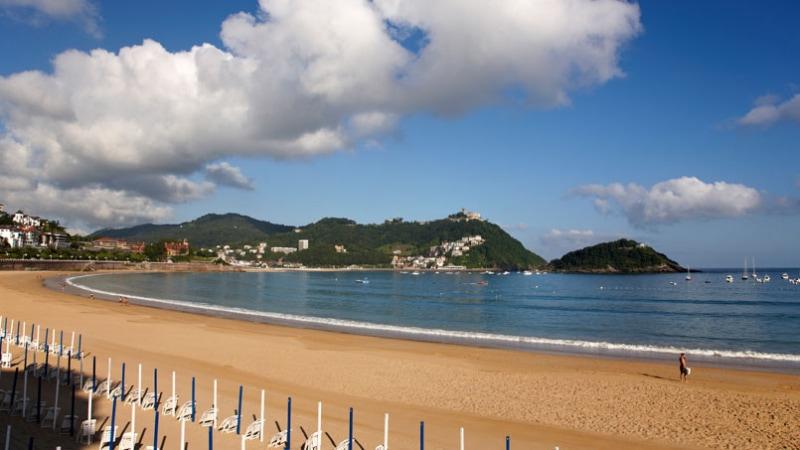
Removed from Unnamed collection
The Concha Bay 
The Concha Bay is the image par excellence of San Sebastián: it is the most classic, the most photographed, the most visited of them all... The Concha Beach stands right in the centre of the city and stretches from the City Hall to the Pico del Loro (Parrot’s Beak). Its 1,500 metres of white sand are elegant and cosmopolitan (it will come as no surprise that the Concha is considered to be one of the best city beaches in Europe).
The The Concha promenade is punctuated with several elements famous in their own right and well known beyond the city: the Concha railing (one of the most universal icons of the city, unmistakable for its design), the lamp posts (replicated in the Film Festival awards, “los relojes” (“the clocks”, main access to the beach), the area around La Perla (with its variety of spa options, bars & restaurants, sports clubs, etc.). All of these elements make a stroll round the Concha (whether by the beach or the promenade) an essential activity for locals and tourists alike. You can continue your walk round the bay by taking the Paseo Nuevo promenade round the bottom of Monte Urgull and heading along the Zurriola Beach until coming to Sagüés in a spectacular city stroll covering around 6 kilometres. https://www.sansebastianturismo.com/en/to-do/what-not-to-miss/the-concha-bay
Map

Removed from Unnamed collection
Constitution Square 
The Plaza de la Constitución lies deep in the heart of the Old Town. The building that dominates the square was San Sebastián’s City Hall until the 1940s. https://www.sansebastianturismo.com/en/to-do/culture-art-architecture/squares-and-promenades
Map
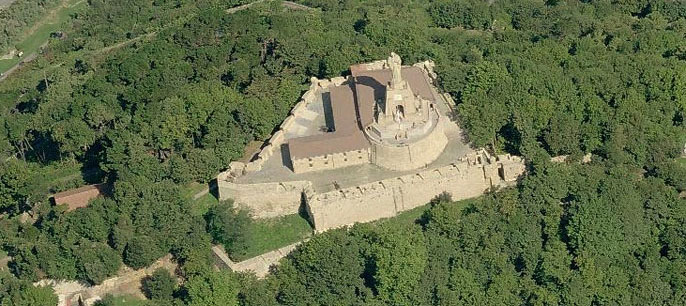
Removed from Unnamed collection
Castle of La Mota 
Monte Urgull is a natural area in the centre of San Sebastián that affords fabulous views of the sea and the city.
Witness to the wars suffered in their long history by the people of San Sebastián, a structure of ancient paths and fortifications can still be found on Monte Urgull today, including the splendid La Mota Castle.
In times of Sancho the Great, King of Navarre, the first defencive lookout point and San Sebastian's early walls were built. The date was around 1150. That first castle was a classic rock top construction, square, with a tower of each of the four corners and a keep to the rear. It was suffered numerous transformations over the years, just like the other fortifications on Monte Urgul. https://www.sansebastianturismo.com/en/to-do/culture-art-architecture/mansions-and-castles
Map
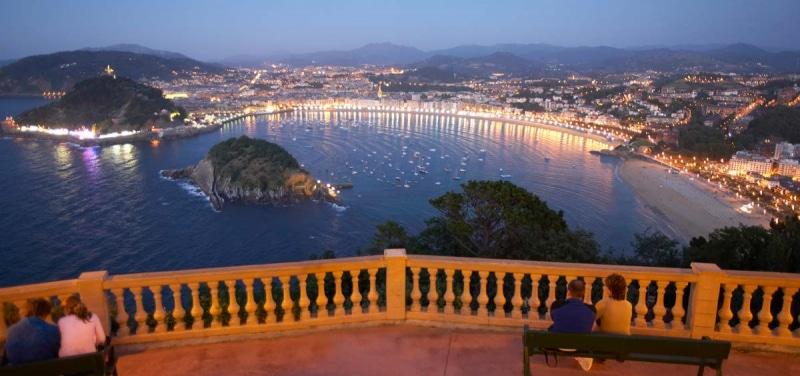
Removed from Unnamed collection
Mount Igeldo 
Monte Igeldo is located at the end of La Concha Bay, marking the limit between the city and the sea. This is a place where the past meets the present, where you can relive your childhood years by visiting a picturesque fairground from yesteryear. Here, you can travel back to the past in a 1912 funicular railway, , while enjoying the most iconic views of the city.
At the summit, you will be able to make out all of the city as well as part of the Gipuzkoan coastline and the immense Cantabrian Sea. Enjoy the tranquil atmosphere of the Bay, as well as the impressive power of the waves breaking against the cliffs. This place guards a special secret: a fairground that captures the essence of the “Belle Epoque". https://www.sansebastianturismo.com/en/to-do/what-not-to-miss/mount-igeldo
Map

Removed from Unnamed collection
Atapuerca 
Atapuerca is one of Europe's most important archaeological sites. It was designated a World Heritage Site by UNESCO in 2000, and a Site of Outstanding Universal Value, also by UNESCO, in 2015. http://www.spain.info/en_IN/que-quieres/arte/monumentos/burgos/yacimiento_de_atapuerca.html
Map

Removed from Unnamed collection
Carthusian monastery 
Before the building was ceded to the Carthusian order, it was the recreational residence of Henry III of Spain, who decided to build this palace on one of his hunting reserves. The building was subsequently restored when his son King John II came to the throne, following a design by John of Cologne. Construction was finally completed in the reign of Queen Isabella, and the top architects, sculptures and painters of the time were employed for the job, including figures such as Simon of Cologne, Gil de Siloé and Pedro Berruguete. The Carthusian monastery became one of the treasures of the Gothic style of the late 15th century. http://www.spain.info/en_IN/que-quieres/arte/monumentos/burgos/cartuja_de_miraflores.html
Map
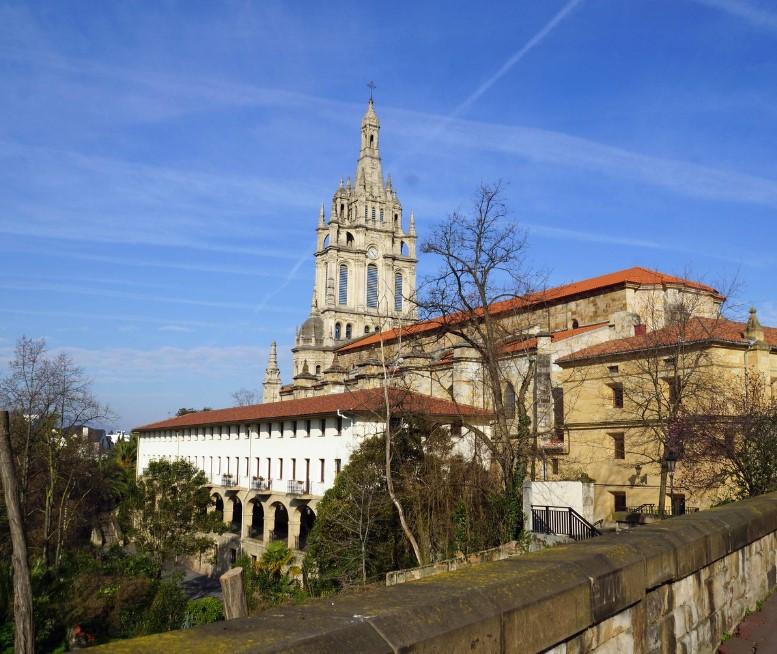
Removed from Unnamed collection
Basilica of Begona 
The work of Sancho Martínez de Arego, it is built on the site where the Virgin appeared in a vision in the early sixteenth century, and it is mainly Gothic, but mixes several styles. The Basilica is a must for many citizens of Bilbao, who come daily to this sanctuary to venerate the Virgin of Begoña, patron saint of Bizkaia, known locally as the ‘Amatxu’ (Mother).
Seafaring people are also greatly devoted to the Virgin and as a result, there have been many boats registered in Bilbao with the name "Virgin of Begoña" or simply "Begoña" since the 16th century. In addition, it is the custom of sailors to salute the Sanctuary and sing the ‘Salve Regina’ when they first see the church from afar as they come up the river.
The "Amatxu" of Begoña, as she is popularly known, receives a heartfelt tribute from residents of Bilbao and Biscay on both 15 August and 11 October, the day of Our Lady of Begoña. On those dates, thousands of pilgrims from throughout the Historical Territory walk through the night to attend a mass in honour of the patron saint of Bilbao and Biscay at the Basilica that bears her name and is one of the great symbols of the city. https://www.bilbaoturismo.net/BilbaoTurismo/en/what-to-see/basilica-of-begona
Map
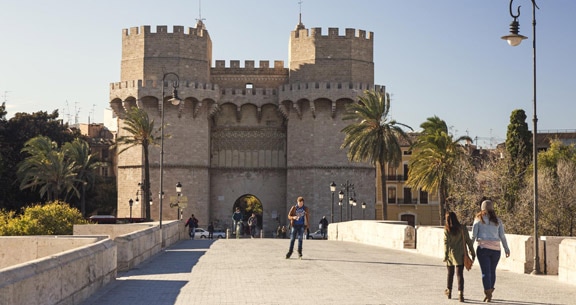
Removed from Unnamed collection
Barrio del Carmen and its Palaces 
This thousand-year-old city neighbourhood grew between two walls, the Muslim and the Christian. A walk through its labyrinthine cobbled streets flanked by imposing medieval buildings takes us to back to other times in history. http://www.visitvalencia.com/en/what-to-visit-valencia/must-sees
Map


